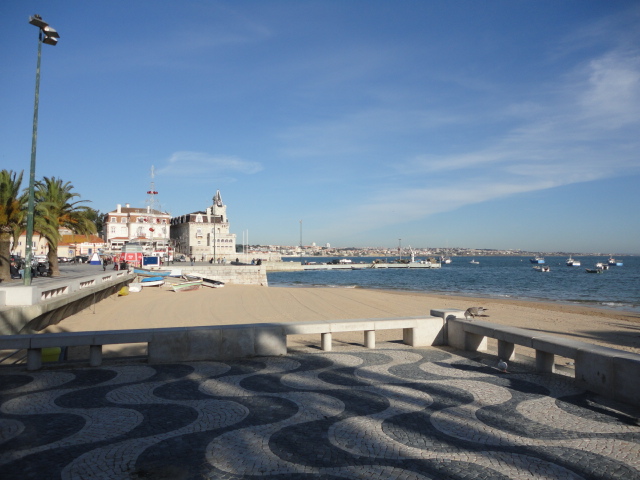When in Portugal I was based at my sister´s house in Cascais, and since it´s such a charming place I wanted to end this series with a post about the town.
Cascais, is a small town on the Estoril coast, about 25km from Lisbon, just a 40min ride by train from Cais do Sodré station in Lisbon.
Once a fisherman´s village it is now a very popular residential area, as well as very popular with tourists due to the proximity to Lisbon, the white sandy beaches, the marina, sophisticated nightlife, proximity to the Casino in Estoril, and the charming historical centre with cobbled streets.
The centre is easily explored on foot, but you can also hire a free bike from the Town Hall (BiCas scheme) to ride around, and you just need your ID and accommodation address. Due to their popularity and depending on the time of year, the bikes aren´t always available, so first come, first served.
There is also a bus route (BusCas) which goes around town and surrounding areas, and at a cost of 50cts is very good value. You can get in at the Cascais train station and it comes around every 10 minutes.
When I was there, I was lucky to see Europe´s biggest concentration of Harley-Davidson´s - 12000 bikes for the 21st European Rally, held in June 14-17, a colourful and fun event, with over 60 thousand people flocking to Cascais to have a look at the emblematic bikes and enjoy the party atmosphere.
There is also a bus route (BusCas) which goes around town and surrounding areas, and at a cost of 50cts is very good value. You can get in at the Cascais train station and it comes around every 10 minutes.
When I was there, I was lucky to see Europe´s biggest concentration of Harley-Davidson´s - 12000 bikes for the 21st European Rally, held in June 14-17, a colourful and fun event, with over 60 thousand people flocking to Cascais to have a look at the emblematic bikes and enjoy the party atmosphere.
 |
| A stage for live entertainment was set up on the beach |
 |
| Harleys everywhere! |
It was in Cascais, that the royal family acquired the habit of going to the beach. From then on, prominent families started building their palaces and mansions in Cascais, turning it into a famous and cosmopolitan area.
The fort later became the official residence of President Oscar Carmona who lived here during his term in office.
 |
| The fortress of Our Lady of the Light |
A luxury hotel - Pousada de Cascais - is now set within the wall of this fortress, with spectacular views to the sea or over the internal patio spaces. It has bars, restaurants, shops, indoor pool and spa and conference rooms and each room is unique.
The town hall, located in the Praça 5 de Outubro (5th of October square) is a building from the 18th century, which was damaged in the 1755 earthquake but was restored in 1821. It is a charming building covered in hand painted tiles (azulejos) outside and inside. On the outside walls, in-between the balconies there are panels of tiles with Saints. One of the evenings, when we went to the city centre, there was a light show being projected on the walls of the Town hall.
 |
| Light show over the walls of the Town Hall |
 |
| Tiles Saints in-between the balconies at the Town hall |
 |
| Walking along the cobbled streets of Cascais |
O´Neill as a holiday home, and later sold to the Counts de Castro Guimarães. The palace was decorated with Oriental furniture and tapestries and 17th century tiles and it houses an impressive collection of 25,000 books. It´s built in a cove and during high tides the base of the building is touched by the waves.
 |
| Museum Castro Guimaraes |
 |
| Santa Marta Lighthouse |
 |
| View from Casa da Guia |
 |
| The marina with the fort in the background |
Before leaving Cascais, don´t forget to buy an ice-cream at Santini´s, the famous Italian Ice cream parlour in existence for over 60 years.
There is a huge variety of ice cream flavours to choose from which vary with the seasons.
The Cascais shop in Avenida Valbom, is open between April to October, and there is a shop in Estoril and Chiado (in Lisbon).
As we sat enjoying our ice-creams my South African nephew who is a football fanatic noticed that one of the Portuguese soccer players - Carlos Martins, was in the shop and asked to pose with him for a photo, which made his day.
(Sorry the wikipedia article is just in Portuguese).
Hope you have enjoyed the armchair trip around France and Portugal.
I will now settle back to my day to day life in Perth and will return to blogging about the A-Z of Australia series.
I will now settle back to my day to day life in Perth and will return to blogging about the A-Z of Australia series.








































